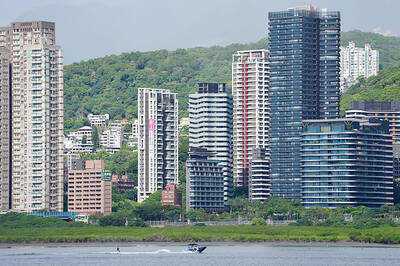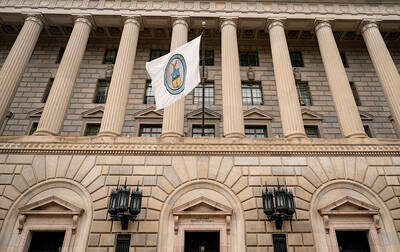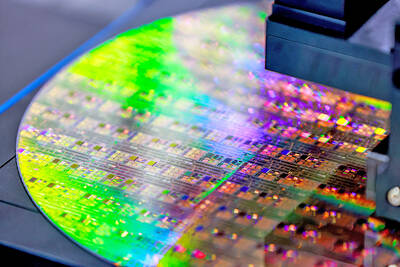US Federal Reserve policymakers appear confident that they have the weapons they would need to fight the next financial crisis. Some of their predecessors on the front lines are not so sure.
In a joint briefing with reporters, former Fed chairman Ben Bernanke, former US secretary of the Treasury and New York Federal Reserve Bank president Timothy Geithner, and former US secretary of the Treasury Henry Paulson all voiced varying degrees of concern about the US’ ability to combat another financial meltdown 10 years after they played prominent roles battling the last one.
While agreeing that the banking system is a lot stronger than it was back then, they said they see some weak spots in the country’s crisis-fighting arsenal that did not exist a decade ago and decried the nation’s ballooning budget deficits.
“We’ve got better defenses against the more mild, typical sets of shocks that happen to economies and financial systems, but in the extreme crisis probably less degree of freedom, more constraints than would be ideal,” said Geithner, who is now president of private equity firm Warburg Pincus LLC.
The US instituted a raft of reforms after the last crisis drove the economy into its worst recession since the Great Depression. Some were designed to fortify the country’s biggest banks and make it easier to shut them down so they would not have to be rescued by the government if they ran into trouble.
Others limited the discretionary power of the Fed, the US Department of the Treasury and Federal Deposit Insurance Corp (FDIC) to provide financial institutions with support as lawmakers responded to a public backlash against bailouts and Wall Street.
Fed Banking Supervision Vice Chairman Randal Quarles in April said that the tools available to regulators in an emergency had changed, but told a conference in Washington: “I wouldn’t be too negative about our ability to respond in the future.”
Fed Chairman Jerome Powell, has voiced confidence in the government’s ability to shut down a failing financial institution in a crisis without having to sink money in it, telling lawmakers in November last year that no bank is too big to fail.
However, the emergency powers that proved so essential a decade ago are “somewhat weaker” today, Geithner said.
Paulson said he agreed, pointing in particular to the limits that US Congress placed on FDIC and the treasury department’s Exchange Stabilization Fund.
“There is some concern there,” said Bernanke, who is a distinguished fellow at the Brookings Institution in Washington.
However, regulators are now more attuned to potential systemic risks, he added.
The deficit-ballooning tax cuts and spending increases agreed to by US President Donald Trump and Congress are ill-timed, Bernanke said, adding that they come as the country is at or near full employment.
He was also concerned about the longer-term consequences of rapidly rising government debt, he said.
“If we don’t act, that is the most certain fiscal or economic crisis we will have,” said Paulson, who chairs his own institute in Chicago. “It will slowly strangle us.”
The enlarged deficits and debt also mean that the government has less room to pump up demand than it did during the last crisis, when then-US president Barack Obama pushed through a massive stimulus package, Geithner said.
Publicly held federal debt stands at 77 percent of GDP, double what it was in 2007.
The Fed, too, has less scope to act as interest rates are lower, Geithner said.
The central bank’s benchmark rate target is 1.75 to 2 percent. It was 5.25 percent in July 2007.
However, Bernanke said that the US central bank is better positioned to respond than other advanced economies.
The European Central Bank, for instance, has a benchmark interest rate of zero.
The US has made “a lot of progress” toward being able to resolve failing financial institutions without having to bail them out, he said.
Paulson basically agreed, with one big proviso. In the midst of a crisis, policymakers might have to provide temporary support so that a collapsing institution can be liquidated over time — even if that proves politically difficult to do.
“It’s nice to have this authority, but somebody has got to be prepared to use it and use it in controversial ways,” he said.
Asked if policymakers and politicians would be able to set aside their differences to tackle any future turmoil given the toxic atmosphere in Washington, Paulson said that the answer is “unknowable.”
However, “it’s the right question to ask,” he added.

Taiwan’s rapidly aging population is fueling a sharp increase in homes occupied solely by elderly people, a trend that is reshaping the nation’s housing market and social fabric, real-estate brokers said yesterday. About 850,000 residences were occupied by elderly people in the first quarter, including 655,000 that housed only one resident, the Ministry of the Interior said. The figures have nearly doubled from a decade earlier, Great Home Realty Co (大家房屋) said, as people aged 65 and older now make up 20.8 percent of the population. “The so-called silver tsunami represents more than just a demographic shift — it could fundamentally redefine the

The US government on Wednesday sanctioned more than two dozen companies in China, Turkey and the United Arab Emirates, including offshoots of a US chip firm, accusing the businesses of providing illicit support to Iran’s military or proxies. The US Department of Commerce included two subsidiaries of US-based chip distributor Arrow Electronics Inc (艾睿電子) on its so-called entity list published on the federal register for facilitating purchases by Iran’s proxies of US tech. Arrow spokesman John Hourigan said that the subsidiaries have been operating in full compliance with US export control regulations and his company is discussing with the US Bureau of

Taiwan’s foreign exchange reserves hit a record high at the end of last month, surpassing the US$600 billion mark for the first time, the central bank said yesterday. Last month, the country’s foreign exchange reserves rose US$5.51 billion from a month earlier to reach US$602.94 billion due to an increase in returns from the central bank’s portfolio management, the movement of other foreign currencies in the portfolio against the US dollar and the bank’s efforts to smooth the volatility of the New Taiwan dollar. Department of Foreign Exchange Director-General Eugene Tsai (蔡炯民)said a rate cut cycle launched by the US Federal Reserve

Businesses across the global semiconductor supply chain are bracing themselves for disruptions from an escalating trade war, after China imposed curbs on rare earth mineral exports and the US responded with additional tariffs and restrictions on software sales to the Asian nation. China’s restrictions, the most targeted move yet to limit supplies of rare earth materials, represent the first major attempt by Beijing to exercise long-arm jurisdiction over foreign companies to target the semiconductor industry, threatening to stall the chips powering the artificial intelligence (AI) boom. They prompted US President Donald Trump on Friday to announce that he would impose an additional